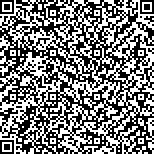周宁,黄晓琳,丁新华.功能性磁刺激治疗脊髓损伤患者神经源性膀胱[J].中华物理医学与康复杂志,2003,(12):.-
扫码阅读全文

|
| 功能性磁刺激治疗脊髓损伤患者神经源性膀胱 |
|
| |
| DOI: |
| 中文关键词: 功能性磁刺激 脊髓损伤 神经源性膀胱 |
| 英文关键词: Functional magnetic stimulation Spinal cord injury Neurogenic bladder and urethra |
| 基金项目:同济医院新技术新业务基金(No.209-66-99) |
|
| 摘要点击次数: 4516 |
| 全文下载次数: 4499 |
| 中文摘要: |
| 目的观察功能性磁刺激(FMS)治疗脊髓损伤患者神经源性膀胱的疗效。 方法采用经S3神经根和膀胱区的FMS治疗脊髓损伤后神经源性膀胱患者12例,通过对患者尿流动力学的检查、因排尿症状而影响生活质量的生活质量评分和国际下尿路综合征(LUTS)症状评分进行疗效评价。 结果10例患者症状有显著改善,日平均排尿次数显著减少,日平均单次尿量增加,尿频、尿急、尿失禁的程度减轻,2例患者无效。 结论FMS可以显著地改善部分脊髓损伤后神经源性膀胱患者的膀胱功能并能显著提高患者的生活质量。 |
| 英文摘要: |
| Objective To assess the efficacy of functional magnetic stimulation (FMS) in treatment of neurogenic dysfunction of bladder and urethra in patients with spinal cord injury. MethodsA total of 12 patients accepted FMS to the sacral nerves at S3 and bladder area. The study variables included urodynamic parameters,the quality of life and international lower urinary tract syndrome (LUTS)symptoms. ResultsThere were significant improvements in 10 patients with respect to the number of voiding,volume voided and degree of frequency,urgency and incontinence. Only 2 patients were failed to make any progress. ConclusionFMS is an effective,safe therapy for the spinal cord injury patients complicated with neurogenic dysfunction of bladder and urethra and improve the patients' quality of life. |
|
查看全文
查看/发表评论 下载PDF阅读器 |
| 关闭 |